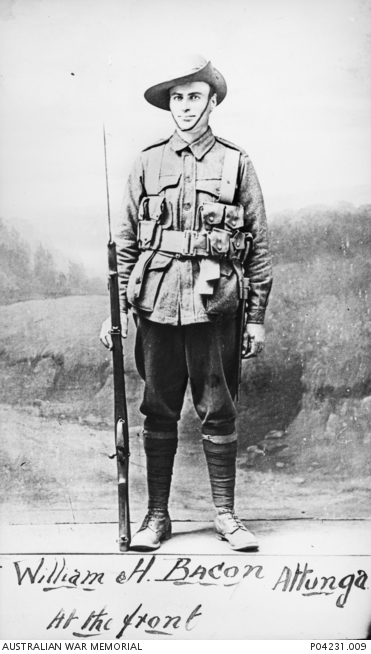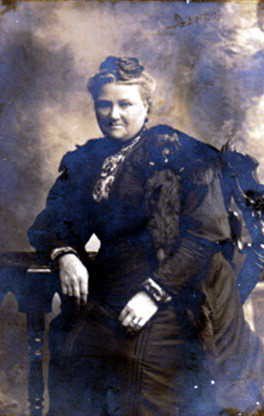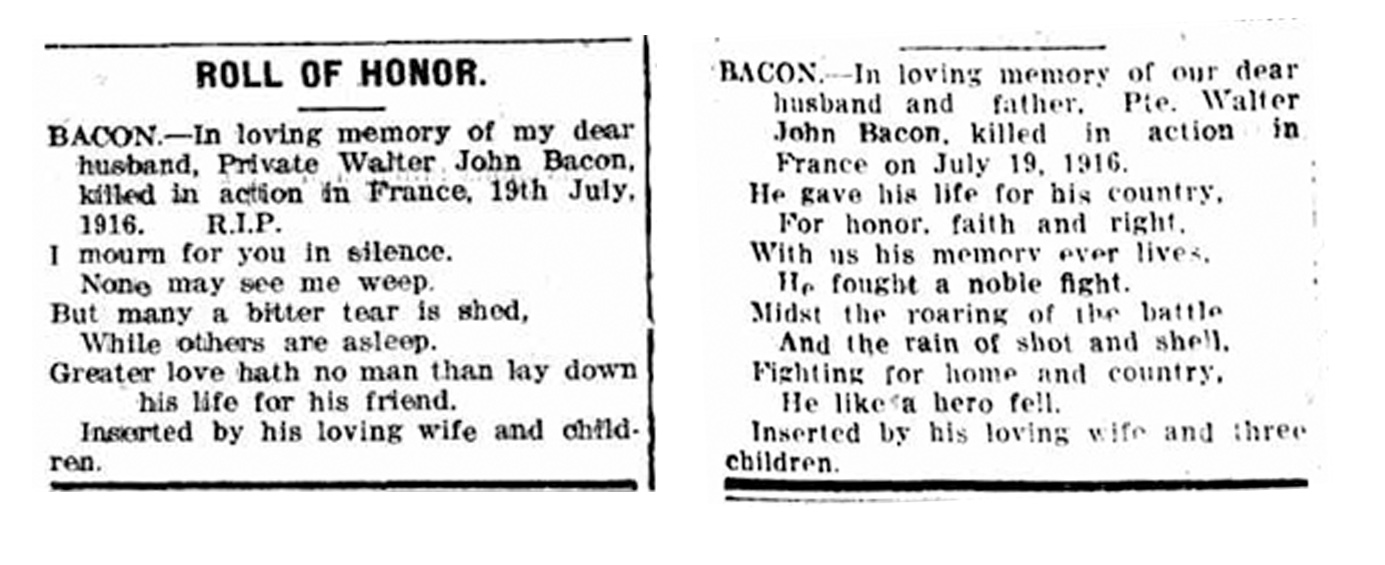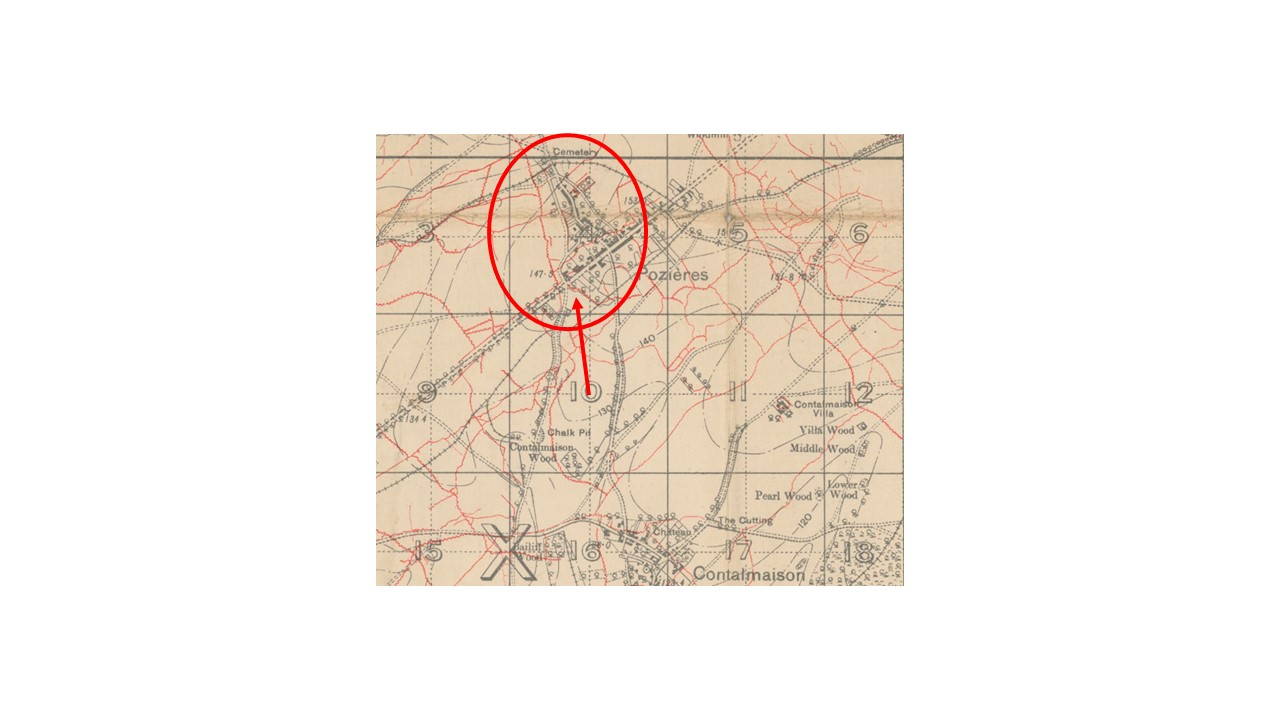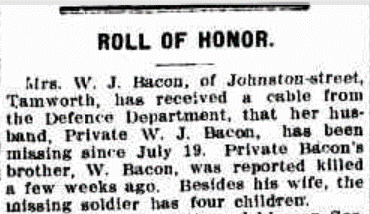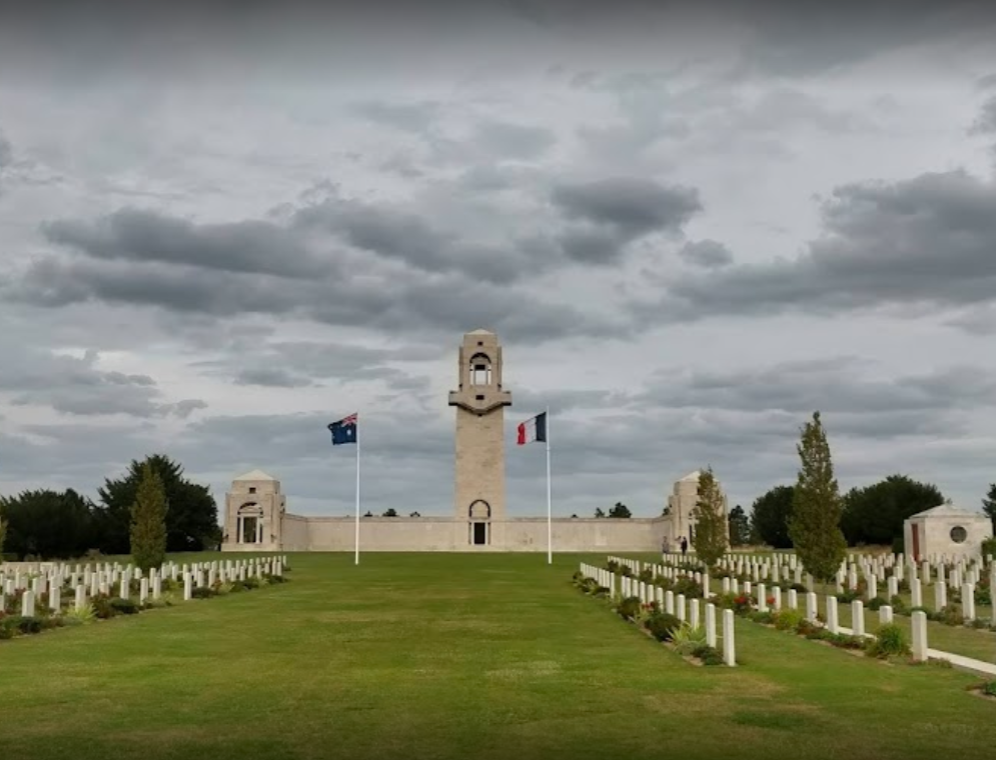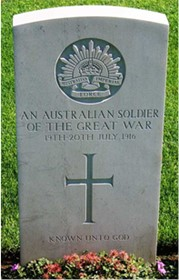
Walter John BACON
Eyes brown, Hair dark, Complexion dark
Walter and William Bacon – Brother's Lost
Can You Help to Identify Walter?
There are no records of Walter Bacon’s burial. There still is a chance he might be identified, but we need help.
A mass grave was found in 2008 that the Germans had dug for 250 bodies they had recovered after the battle. As of 2024 180 of these soldiers have been identified and given proper burials and recognition through finding family DNA donors. 70 soldiers remain and some identifications are still highly likely. We just need to find DNA donors.
DNA donors from both father’s and mother’s lines are still being sought for Walter, see the panel at end of story for some family tree details.
William’s burial is also unknown.
If you know anything of the Bacon family would like to hear from you.
With thanks to Stephen Brooks for his contribution.
William “Bill” Bacon, born in 1883, and Walter Bacon, born in 1887, were the second and fourth children of Thomas and Mary Ann (nee Steel). The family lived in the Nundle, NSW area, about 400 km north of Sydney. They had a total of eleven children.
Walter married Annie Barr in 1912. They had three children, Dorothy, Ivy, Walter and also adopted a fourth, Eileen. At the time of his enlistment, Walter and Annie were living in Tamworth, NSW. He listed his occupation as a boundary rider. Annie would eventually move to Chatswood, NSW after the war.
William was single, working as a labourer at Attunga Springs.
Walter’s War – Egypt and Fromelles
Walter enlisted on 27 July 1915, three days after William. Both brothers were assigned to the 4th Battalion, but were assigned to different Reinforcements groups. Their initial training would have been at the camp in Liverpool, NSW.
Walter was the first to depart from Australia, leaving on 13 October 1915, aboard HMAT A17 Port Lincoln , heading for Alexandria, Egypt. Walter arrived not there long before the 4th Battalion soldiers returned from Gallipoli. They were all encamped at Tel el Kebir, between Cairo and the Suez Canal.
With the huge losses of men from Gallipoli and all the new recruits from Australia arriving in Egypt, major reorganizations were underway. New battalions were being raised and there was a good deal of movement of personnel between units. On 16 February 1916, Walter was reassigned to A Company of the newly formed 53rd Battalion. The Gallipoli veterans were not slow in pointing out to whoever would listen that they were the “Dinkums” and the new recruits were the “War Babies”. Source: Australian War Memorial 53rd Battalion War Diaries Feb-June 1916 page 3
Training for all continued. In March they were sent to Ferry Post, on foot, a trip of about 60 km that took three days. It was a significant challenge, walking over the soft sand in the 38°C heat with each man carrying their own possessions and 120 rounds of ammunition. Many of the men suffered heat stroke.
Once there, they remained at Ferry Post guarding the Suez Canal until 16 June when they began the move to the Western Front.
The 990 soldiers of the 53rd left Alexandria on 19 June 1916 on the Royal George.
After arriving in Marseilles on the 28th, they had a 62 hour train ride to Thiennes. It was noted that their “reputation had evidently preceded them”, as they were well received by the French at the towns all along the route. Source: Australian War Memorial 53rd Battalion War Diaries February-June 1916 page 4
After several days of marching the remaining 35 km to Fleurbaix, they were settled into billets on 16 July.
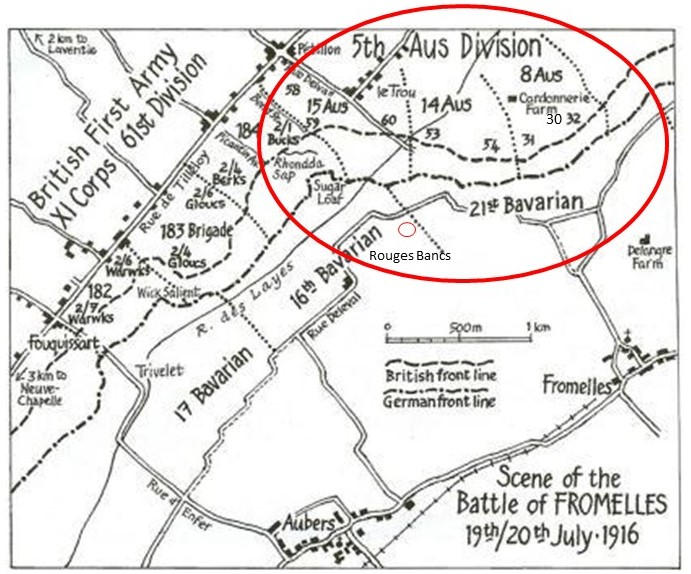
Early the next morning, the 53rd were moved straight into the front lines, preparing for an attack, but it was cancelled by bad weather. They remained in the trenches on the 18th, in relief of the 54th.
By 11:00 AM on the 19th, heavy bombardment was underway from both armies. At 4:00 PM the 54th Battalion rejoined on their left and all were now in position and prepared for an attack.
The main objective for the 53rd was to take the trenches to the left of a heavily armed, elevated German defensive position, the ‘Sugar Loaf’, which dominated the front lines. If the Sugar Loaf could not be taken, the 53rd and the other battalions would be subjected to murderous enfiled fire from the machine guns and counterattacks from that direction.
The Australians went on the offensive at 5:43 PM. There were four waves from the 53rd, with Walter’s A Company in the first two waves.
The first waves did not immediately charge from the Australian line, but went out into No-Man’s-Land and laid down, waiting for the British bombardment to lift.
At 6:00 PM, the Germans were rushed, their front line captured and the Australians headed for the second line. Some of the advanced trenches were just water filled ditches, which needed to be fortified by the 53rd to be able to hold their advanced position against future attacks.
As below, the 14th Brigade War Diary notes that the artillery had been successful and “very few living Germans were found in the first and second line trenches”. However, within the first 20 minutes the 53rd had lost all their Company commanders, all their seconds in command and six junior officers.
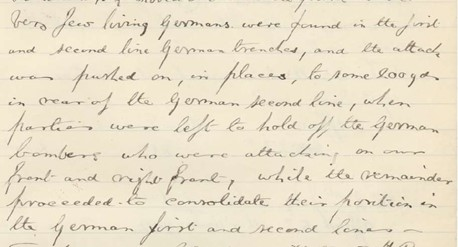
They were able to link up with the 54th on their left and, with the 31st and 32nd, occupy a line from Rouges Bancs to near Delangre Farm, but the 60th on their right had been unable to advance due to the devastation from the machine gun emplacement at the Sugar Loaf.
They held their lines through the night against “violent” attacks from the Germans from the front, but their exposed right flank had allowed the Germans access to the first line trench BEHIND the 53rd, requiring the Australians to later have to fight their way back to their own lines.
By 9:00 AM on the 20th, the 53rd received orders to retreat from positions won and by 9:30 AM they had ‘retired with very heavy loss’. Of the 990 men who had left Alexandria just weeks before, 372 were killed or missing and 335 were wounded. Walter was among the missing.
Walter’s body was not recovered by the Australians and the Germans did not report finding an ID disk or some form of identity for Walter for the bodies that they recovered after the battle.
Walter’s wife, Annie, was notified of his death by cable, but she did not receive any other information or his personal effects.
At a Court of Enquiry in the Field on 2 September 1917, Walter was declared killed in action on 19 July 1916. He was clearly missed by his family.
After the War Annie wrote the AIF, seeking some degree of closure, noting that what she had received was “not satisfactory. The Army was understanding, but they had no information available to offer her.
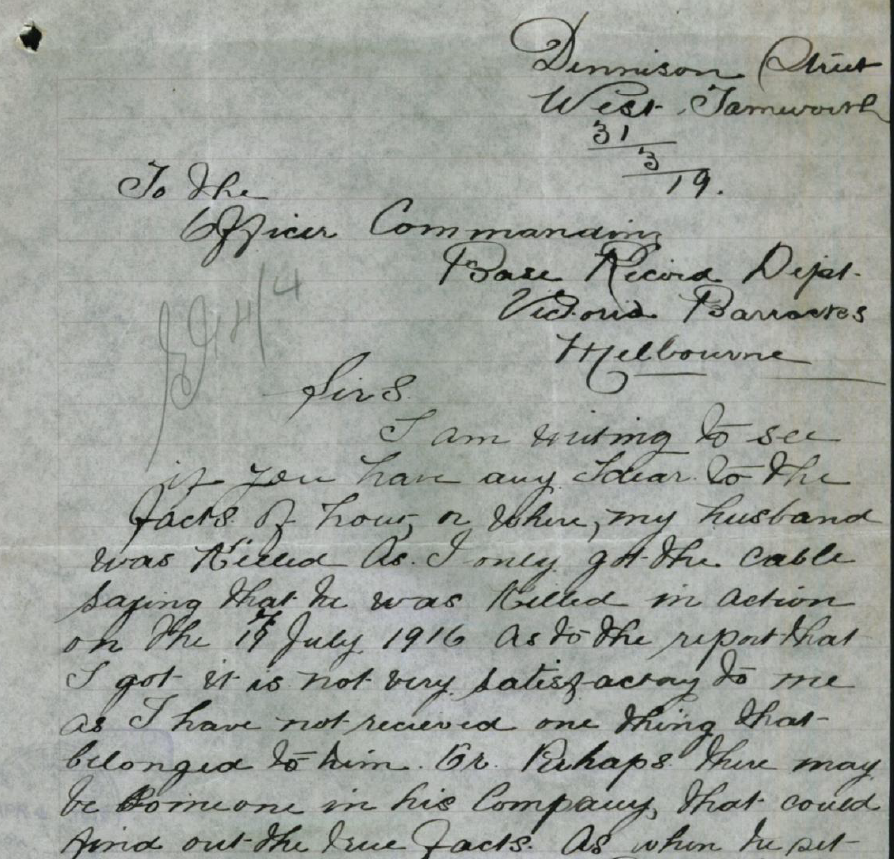
A further sad family note is that Walter and Annie’s young son William, who was born after Walter left, died in 1918 following a lengthy illness since his birth. Young William’s funeral was solidly supported by a newly formed ‘All-in-Victory’ patriotic group:
“On being notified of the child’s death, the organization immediately took in hand the funeral arrangements, which were carried out in a manner befitting the last rites to the son of a gallant Australian who had died fighting for his country.” “…an impressive and fitting tribute to their fallen comrade.”
Walter was awarded the 1914/15 Star, British War Medal, Victory Medal, Memorial Scroll, and a Memorial Plaque.
He is commemorated at:
- Panel 7A, VC Corner Australian Cemetery and Memorial, Fromelles
- Panel 156 at the Australian War Memorial, Canberra
- Tamworth ANZAC Park Memorial Gates.
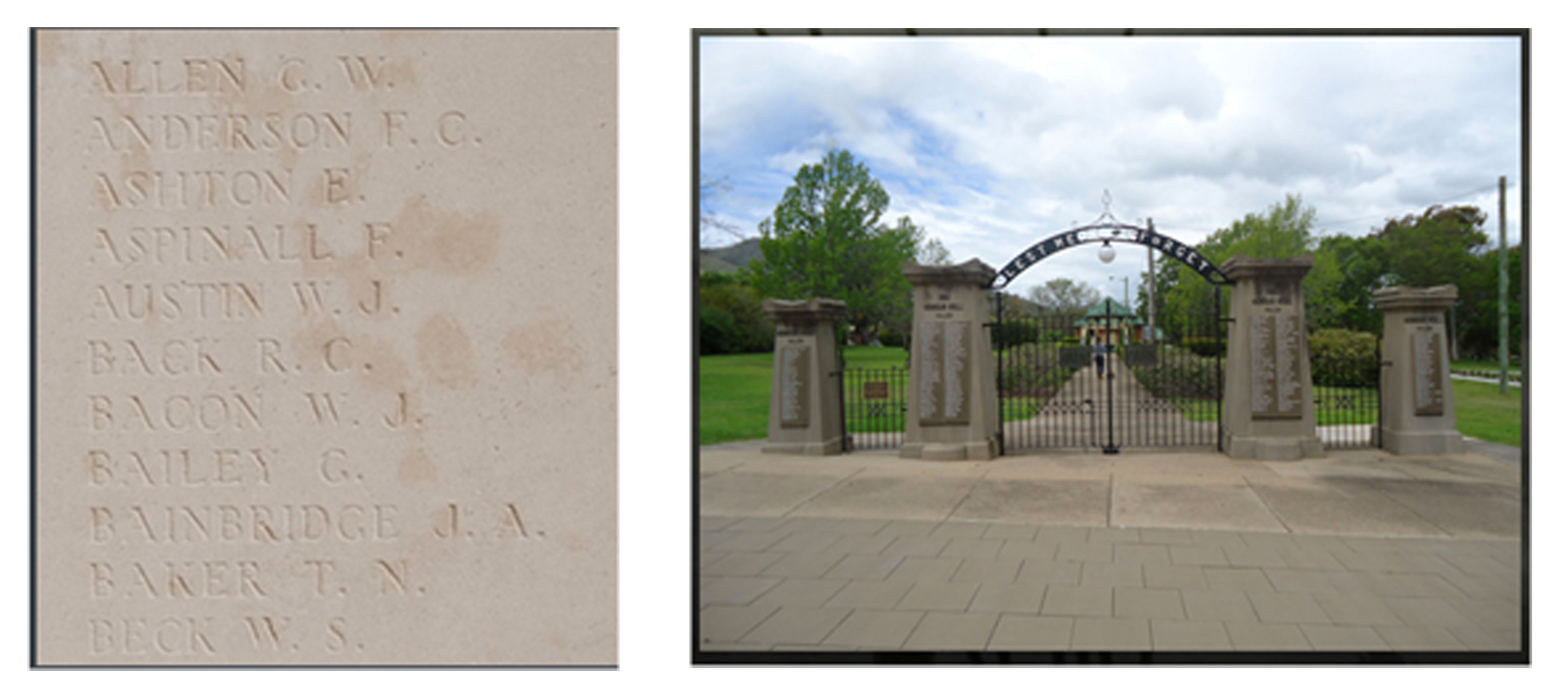
William’s War – Egypt and Pozieres
William’s 4th Battalion Reinforcements group left Australia six weeks after Walter’s, arriving in Egypt on 7 January 1916. While massive reorganizations were going on, he remained with the 4th Battalion.
The 4th left Egypt for the Western Front on 23 March on the HT Simla , arriving in Marseilles a week later. They then had a three day train ride to Steenbeque and moved on to Staple, about 90 km from Pozieres, for further training, which included gas masks in a trench filled with gas.
William was the first to the Fromelles area. By mid-April the 4th were in the trenches near Petillon and Fleurbaix. While there were no major attacks, there was ongoing shelling and rifle fire. They remained in the area for the next eleven weeks.
They left the trenches in this area on 7 July and on 10 July they left the area and were headed to Pozieres…just a week before Walter arrived at Fleurbaix.
By 22 July, the 944 soldiers of the 4th Battalion were just southwest of Pozieres, readying for an attack, which was set to begin around midnight. Their initial advances that night were successful, but on the 24th they were under very heavy artillery shelling. Many men had to be dug out after being buried by the blasts.
On 25 July, the plans were for them to move further north of Pozieres to the area of the train line. The attack which began at 3:55 AM and William’s A Company was in the lead. This was successful and their only losses were two killed and six wounded. However, heavy shelling followed throughout the day and more Aussies were killed. William was one of the casualties this day.

William’s records show that he was buried in the vicinity of the battle, but no specific details were recorded. The Court of Enquiry held on 22 September declared him as being Killed in Action In the Field, with no burial details given.
After the War, exhumation efforts to locate unknown soldiers continued. In 1936 a soldier’s body with a silver matchbox with the inscription “W.H.B” was found in the northern outskirts of Pozieres. The AIF had concluded that this could have been William.
Walter's father was informed and asked if he had any knowledge of his son owning the memento however no reply was received from the family and it unknown what the Commonwealth War Graves did with the remains. However, there are no further records to confirm this and he remains missing to this day.
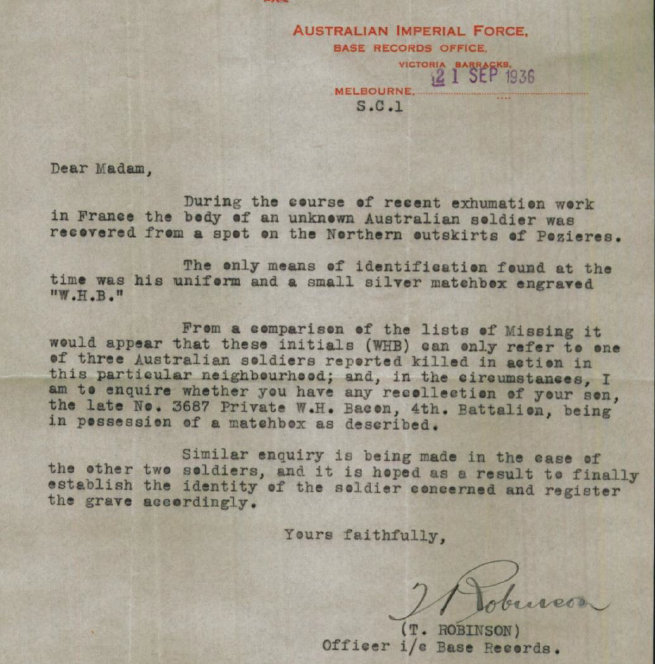
He was awarded the British War Medal, Victory Medal, a Memorial Scroll and a Memorial Plaque.
William is commemorated at the Villers-Bretonneux Memorial, an Australian national memorial erected to commemorate all the Australian soldiers and especially to name those of the dead whose graves are not known. He is also commemorated on panel 39 at the Australian War Memorial, Canberra.
The Value of Closure
Lastly, it is worthwhile noting an example of the value the families and the Army placed on the Memorial Scroll, Plaque and message from the King, as well as the closeness of the Bacon family.
In 1921 as these items were being issued, Annie Bacon and her family had changed address and Walter’s Memorial Scroll and King’s message had been returned to the Army. The Army then placed an advertisement in the papers seeking anyone who could provide new contact details. Both Annie and Walter's father Thomas individually replied to the ad and contact was re-established.
Annie then wrote the Army requesting that a Scroll and King’s message be sent to Walter’s mother, Mary Ann, noting that Mary Ann had two boys killed and that “she had as much right as me to get these things.”
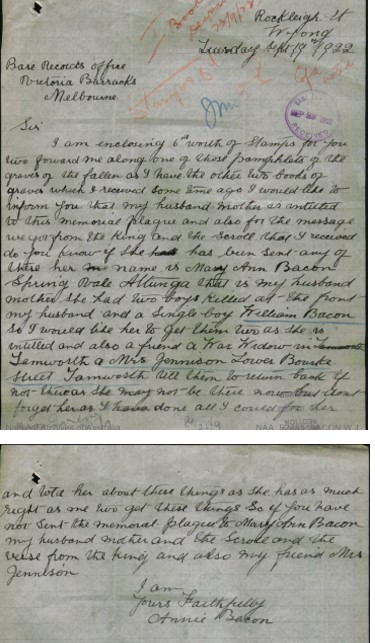
Can There Still Be Closure for Walter?
Even more than 100 years after the battle, soldier identification efforts are still going on.
In 2008 a German grave was discovered that contained the remains from a large number of soldiers from the battle. DNA testing from relatives that have been able to be located has been successful for the identification of 180 (as of 2024) of the 250 bodies in the grave.
Walter may be one of the yet unidentified soldiers. Family members are still being sought for DNA samples.
The Search Continues
DNA is still being sought for family connections to
| Soldier | Walter BACON 1887 – 1916 and William BACON 1881-1916 |
| Parents | Thomas BACON 1851 - 1943 Dungog, NSW and Mary Ann STEEL 1862 - 1935 Dungog, NSW |
Siblings
- Thomas 1879-1953 Murwillumbah, NSW
- Alfred 1885-1922 Walcha, NSW
- Lawrence 1890-1935 Mudgee, NSW
- James 1893-1923 Tamworth, NSW
- Ada Mary 1895-1924 Attunga, NSW
- Arthur 1899-1982 Attunga, NSW
- Albert 1901-1995 Wallsend, NSW
- Elizabeth 1901-1988 Tamworth, NSW
- Clare 1904-1931 Manilla, NSW
| Grandparents | |||
| Paternal | John BACON 1818 – 1866 Newcastle, NSW and Ann Maria Elias POWERS 1818 – 1914 Dungog, NSW | ||
| Maternal | Thomas STEEL 1830 – 1903 Walcha Road, NSW and Lucy PALMER 1828-1910 Attunga, NSW |
Seeking DNA Donors

Contacts
(Contact: carla@fromelles.info or geoffrey@fromelles.info).
(Contact: army.uwc@defence.gov.au or phone 1800 019 090).
Donations
If you are able, please contribute to the upkeep of this resource.
(Contact: bill@fromelles.info ).
